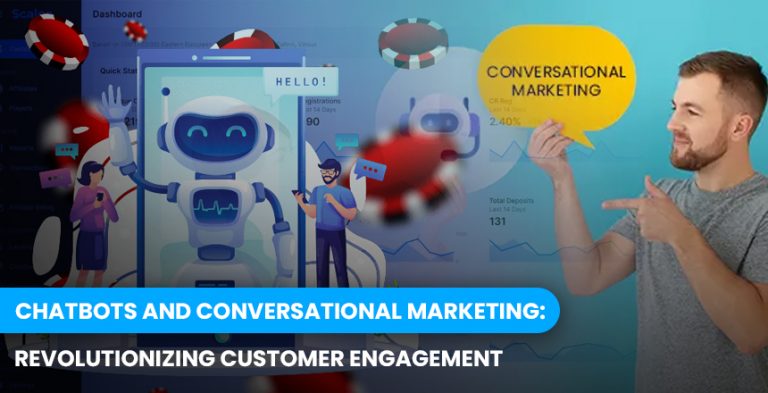As 2024 approaches, digital marketing is set to evolve rapidly, with new technologies, trends,
and consumer behaviors shaping the landscape. To stay ahead, businesses need to adapt and
embrace innovative marketing strategies that meet the needs of today’s digital-first world. Below
are the top digital marketing strategies that are expected to dominate in 2024, along with
actionable insights on how to implement them effectively.
AI-Powered Marketing and Automation
Artificial intelligence (AI) has revolutionized the way marketers interact with customers. AI-driven
marketing strategies in 2024 will continue to streamline tasks, optimize campaigns, and deliver
personalized customer experiences at scale.
How to Implement:
AI Chatbots and Virtual Assistants: Use AI-driven chatbots to provide 24/7 customer service,
manage inquiries, and offer product recommendations based on browsing behavior.
Personalized Content Delivery: Leverage machine learning algorithms to analyze consumer
data and deliver hyper-personalized ads, email campaigns, and product suggestions. Tools like
HubSpot and Marketo offer AI-driven automation for more targeted marketing.
AI-Generated Content: AI tools like Jasper and Copy.ai are increasingly being used for creating
content such as product descriptions, email newsletters, and even social media posts, allowing
marketers to scale their content strategies quickly.
Video Marketing Domination
Video continues to dominate content consumption across platforms, and in 2024, it will remain
essential for brands looking to engage audiences. With the rise of short-form videos, live
streaming, and interactive video content, businesses can use this medium to capture attention
and build stronger connections with their audience.
How to Implement:
Short-Form Video Content: Platforms like TikTok, Instagram Reels, and YouTube Shorts have
seen massive growth. Brands should focus on creating engaging, bite-sized content that aligns
with current trends.
Live Streaming: Live video continues to grow in popularity, particularly for product launches,
behind-the-scenes content, and Q&A sessions. Consider using YouTube Live, Facebook Live,
or Twitch to interact with your audience in real time.
Interactive Videos: Incorporate interactive elements such as polls, quizzes, and clickable
hotspots within videos to enhance engagement. Tools like Vidyard and Wistia can help integrate
these features.
Voice Search Optimization
With the increasing popularity of voice-activated devices such as Amazon Alexa and Google
Assistant, voice search is becoming a key part of the consumer journey. In 2024, optimizing
content for voice search will be more important than ever, as more users rely on voice
commands to search for products and services.
How to Implement:
Optimize for Conversational Keywords: Unlike traditional typed queries, voice search queries
tend to be longer and more conversational. Focus on long-tail keywords and natural language
that aligns with how people speak.
Use Structured Data Markup: Implement schema markup to help search engines better
understand your content and provide more detailed voice search results.
Answer Common Questions: Create FAQ pages that directly answer the questions your target
audience is asking via voice search. This increases the chances of being featured in voice
search results.
The Rise of Social Commerce
Social media platforms are increasingly becoming e-commerce destinations, with users being
able to browse, discover, and purchase products directly on platforms like Instagram, TikTok,
and Pinterest. In 2024, brands must prioritize social commerce as a key channel for driving
sales and engagement.
How to Implement:
Instagram and TikTok Shopping: Utilize shoppable posts and videos to allow users to make
purchases without leaving the app. Leverage features like Instagram Shops and TikTok
Shopping to create a seamless buying experience.
Live Shopping Events: Host live shopping events on platforms like Facebook Live or Instagram
Live to showcase products in real time and offer exclusive deals. These events mimic in-store
experiences and boost engagement.
User-Generated Content (UGC): Encourage customers to share their experiences with your
products on social media. Feature UGC in your social commerce strategy to build trust and
authenticity.
Influencer Marketing Evolution
Influencer marketing continues to be a powerful tool, but its landscape is evolving. In 2024,
brands will shift focus toward micro-influencers and nano-influencers who have smaller, highly
engaged followings. Authenticity and niche communities will take precedence over large-scale
influencer campaigns.
How to Implement:
Partner with Micro-Influencers: Micro-influencers (10,000–100,000 followers) and
nano-influencers (1,000–10,000 followers) often have higher engagement rates and stronger
relationships with their audiences compared to mega-influencers. Collaborate with influencers
who align with your brand’s niche and values.
Long-Term Collaborations: Instead of one-off campaigns, establish long-term partnerships with
influencers to create a more genuine connection between the influencer and your brand. This
fosters trust and loyalty among their followers.
Diversify Platforms: Explore emerging platforms like BeReal or Mastodon for influencer
partnerships, where smaller, more targeted communities exist.
The Importance of Data Privacy and User Consent
With increasing concerns about data privacy and the introduction of regulations like the General
Data Protection Regulation (GDPR) and California Consumer Privacy Act (CCPA), data privacywill continue to be a crucial focus in 2024. Consumers are more aware of how their data is used, and brands need to be transparent in their data collection and usage practices.
How to Implement:
Implement clear consent practices: Ensure that your data collection methods are transparent
and that users are informed about how their data will be used. This includes having
easy-to-read privacy policies and explicit consent forms.
Cookieless Tracking: As third-party cookies phase out, invest in alternative methods for
gathering data, such as first-party data collection through newsletters, loyalty programs, and
direct interactions.
Prioritize Trust: Focus on building trust with consumers by prioritizing data security, offering
opt-out options, and being upfront about data usage.
Content Marketing with a Focus on Expertise and Authority
In 2024, content marketing will emphasize E-A-T (Expertise, Authoritativeness, and
Trustworthiness), a key ranking factor in Google’s search algorithm. High-quality, informative
content that demonstrates expertise will be essential for SEO success and audience
engagement.
How to Implement:
Invest in Expert Content: Collaborate with industry experts or thought leaders to produce
content that establishes your brand as a trusted source of information. This could be in the form
of blog posts, whitepapers, case studies, or interviews.
Update and Repurpose Old Content: Regularly update existing content to ensure it remains
relevant and valuable. Repurpose older blog posts into new formats such as infographics,
podcasts, or videos to reach different segments of your audience.
Focus on Long-Form Content: While short-form content is effective for social media, long-form
content (1,500+ words) continues to perform well for SEO. In-depth guides and
research-backed articles can boost your site’s authority.
Sustainability and purpose-driven marketing
Consumers, especially Gen Z, are increasingly looking for brands that align with their values,
particularly around sustainability, social justice, and corporate responsibility. In 2024,
purpose-driven marketing will be a crucial differentiator for brands looking to resonate with
conscious consumers.
How to Implement:
Highlight sustainability efforts: Showcase your brand’s commitment to sustainability through
content, product descriptions, and campaigns. For example, detail how your packaging is
eco-friendly or how you support sustainable sourcing.
Support social causes: align your brand with causes that matter to your audience, such as
diversity and inclusion or environmental activism. Authenticity is key—avoid cause-washing by
genuinely supporting the issues that align with your company’s mission.
Conclusion
The digital marketing landscape in 2024 is set to be more dynamic than ever, with a strong
focus on AI, video, personalization, and consumer trust. Brands that embrace these strategies
and adapt to the evolving needs of their audience will be better positioned to succeed in a
competitive market. By staying on top of emerging trends like social commerce, voice search,
and sustainability, you can future-proof your marketing efforts and achieve long-term growth.








